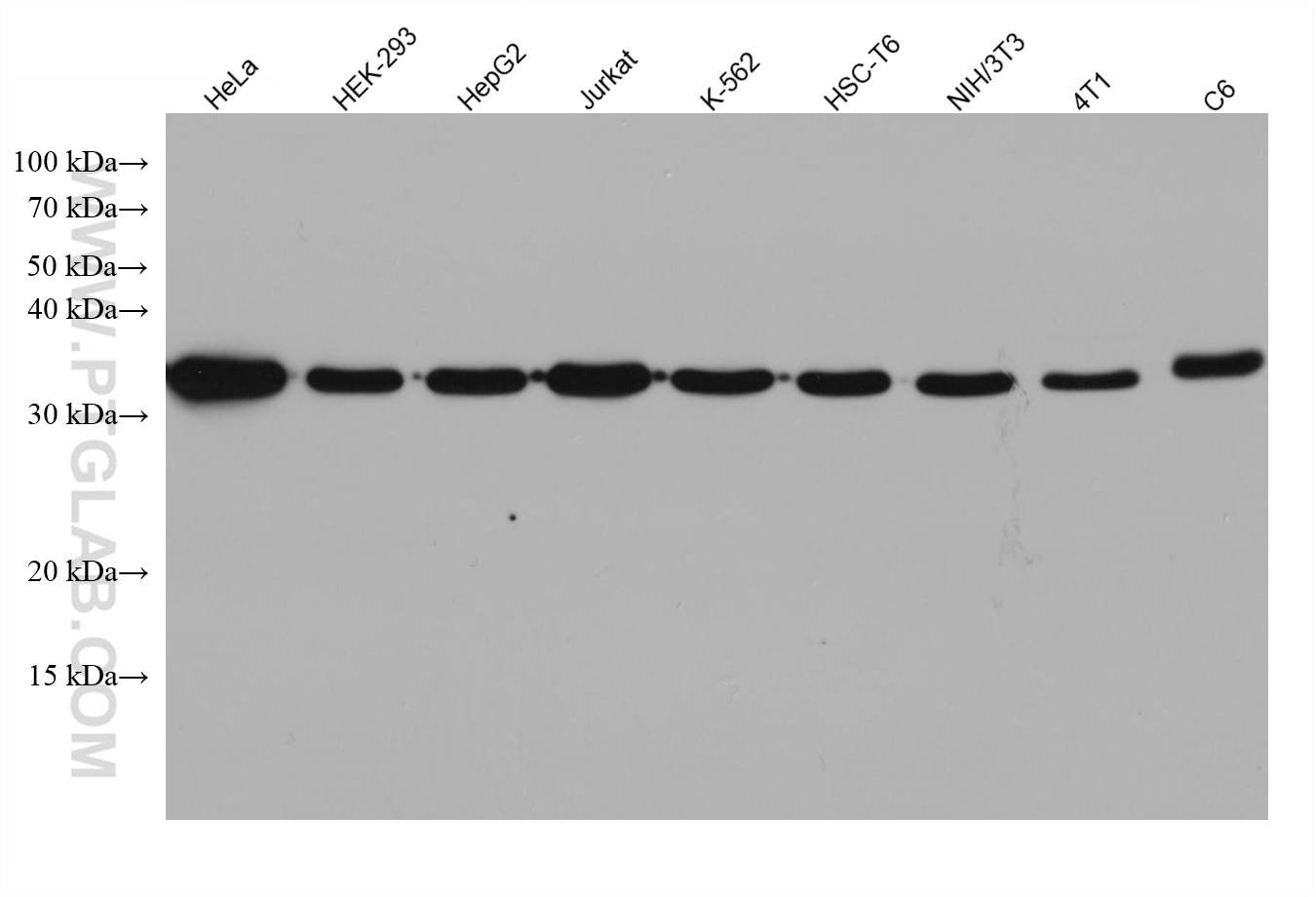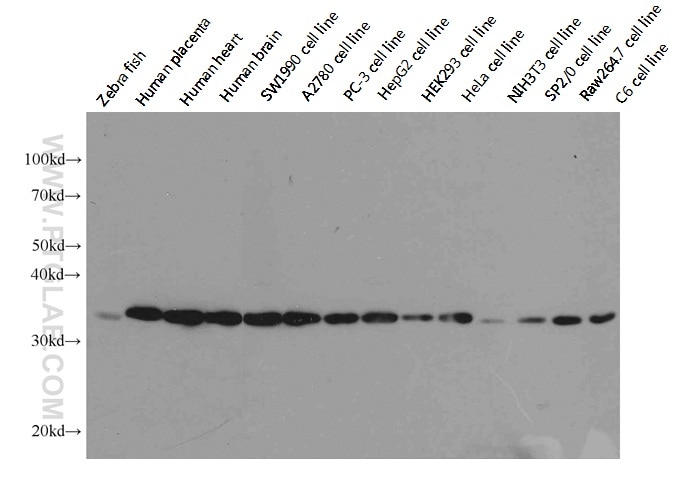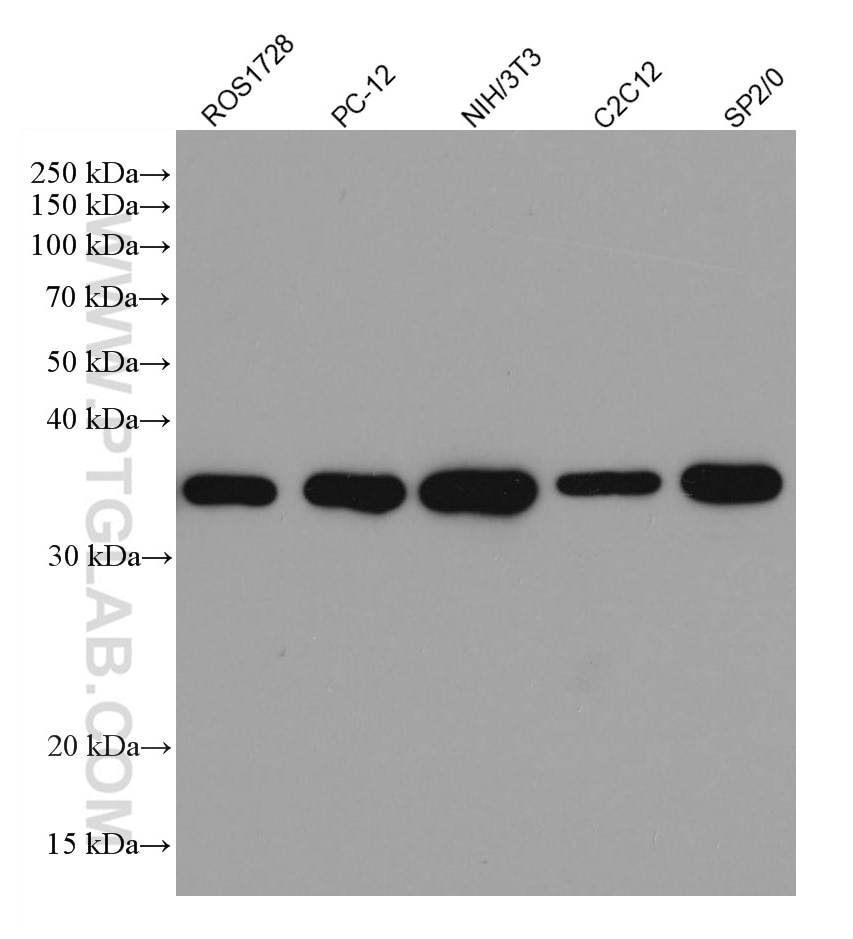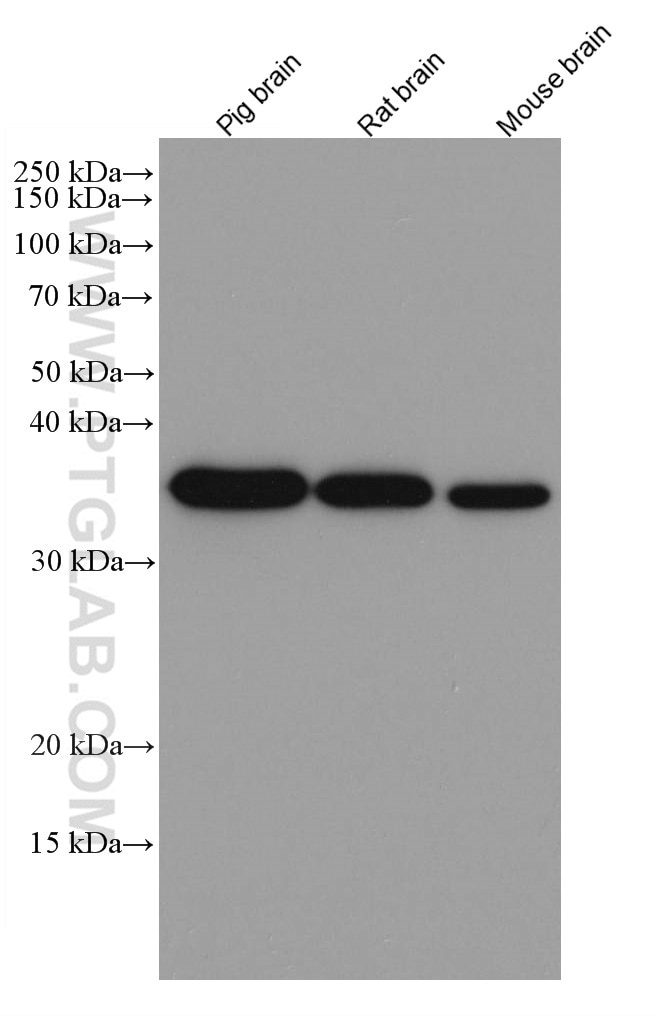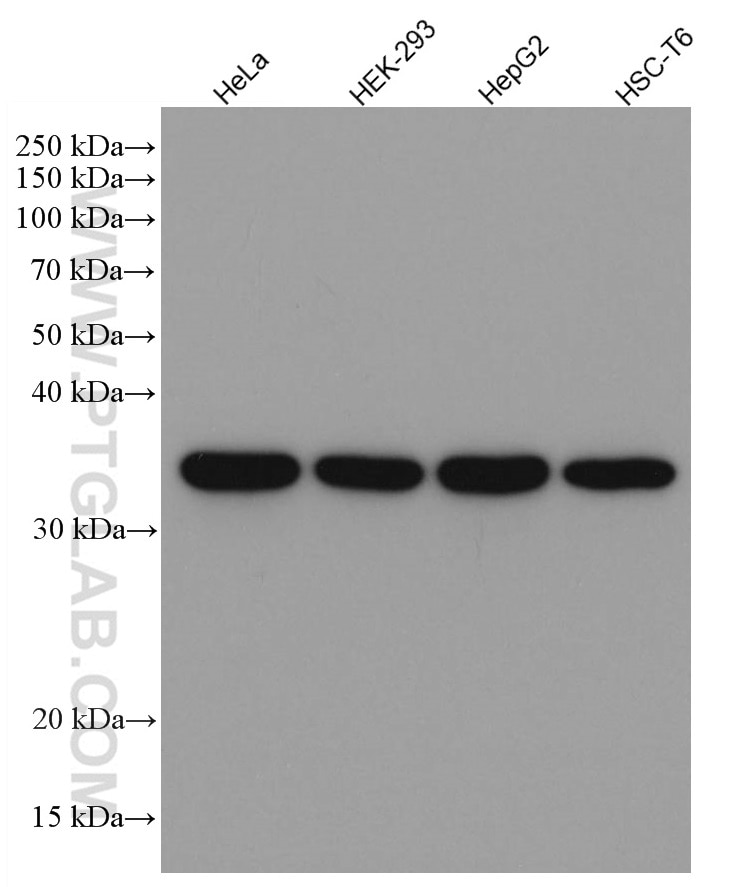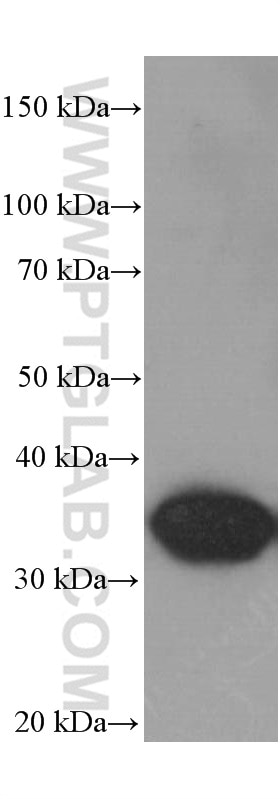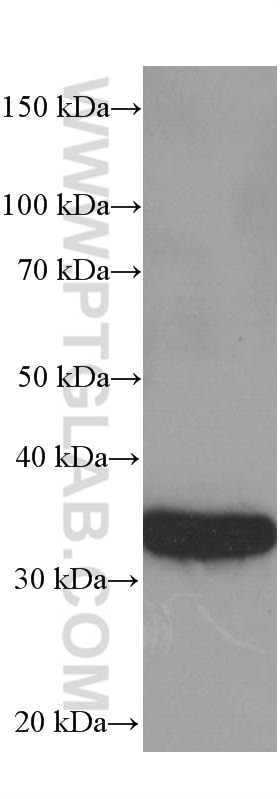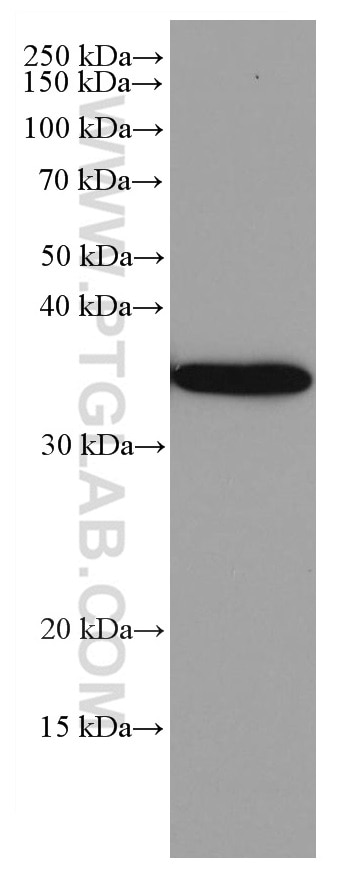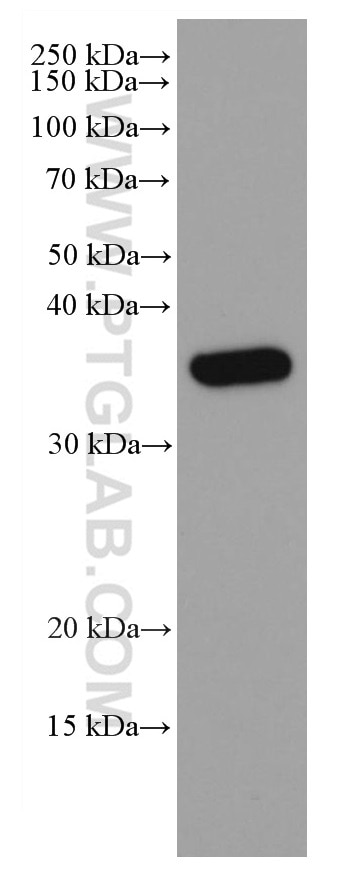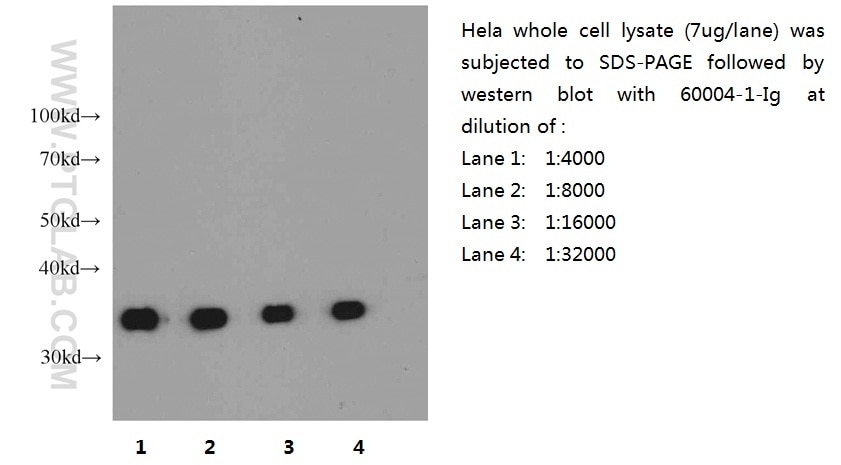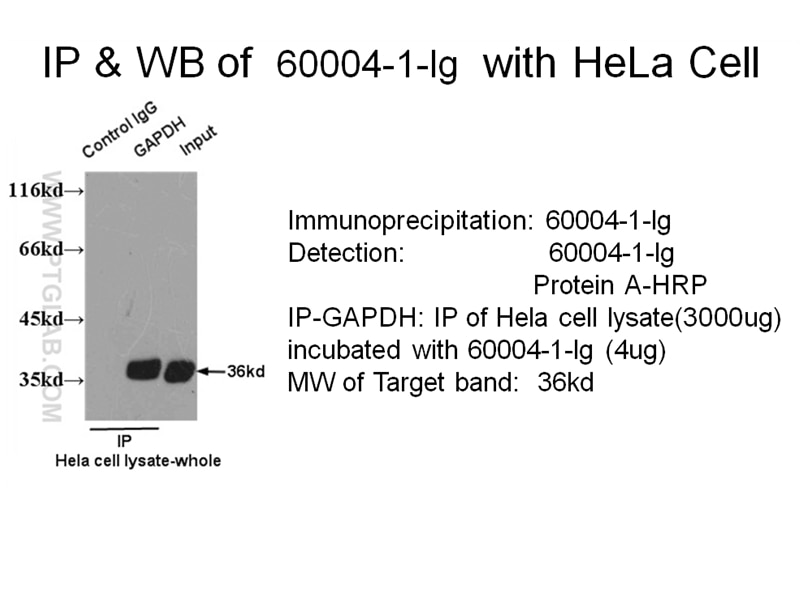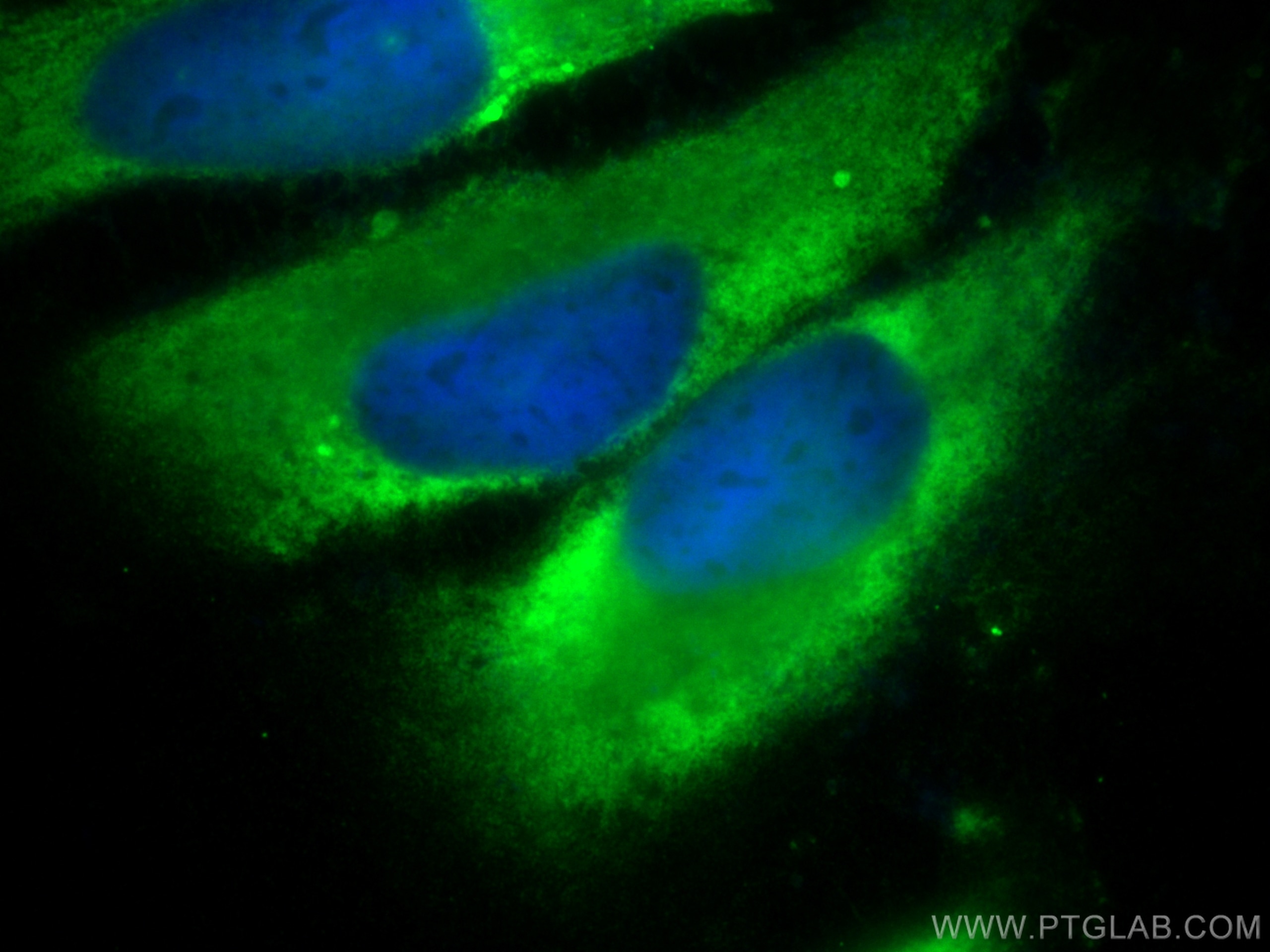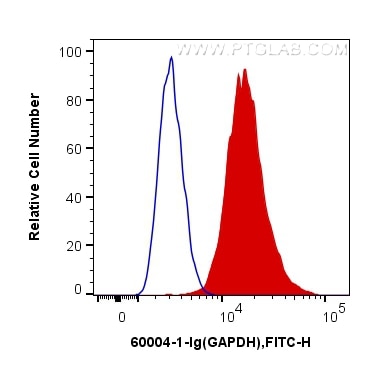Published Applications
| WB | See 1 publications below |
Product Information
60004-1-PBS targets GAPDH in WB, IHC, IF/ICC, FC (Intra), IP, ELISA applications and shows reactivity with human, mouse, rat, pig, zebrafish, yeast samples.
| Tested Reactivity | human, mouse, rat, pig, zebrafish, yeast |
| Host / Isotype | Mouse / IgG2b |
| Class | Monoclonal |
| Type | Antibody |
| Immunogen |
CatNo: Ag0766 Product name: Recombinant human GAPDH protein Source: e coli.-derived, PGEX-4T Tag: GST Domain: 1-335 aa of BC004109 Sequence: MGKVKVGVNGFGRIGRLVTRAAFNSGKVDIVAINDPFIDLNYMVYMFQYDSTHGKFHGTVKAENGKLVINGNPITIFQERDPSKIKWGDAGAEYVVESTGVFTTMEKAGAHLQGGAKRVIISAPSADAPMFVMGVNHEKYDNSLKIISNASCTTNCLAPLAKVIHDNFGIVEGLMTTVHAITATQKTVDGPSGKLWRDGRGALQNIIPASTGAAKAVGKVIPELNGKLTGMAFRVPTANVSVVDLTCRLEKPAKYDDIKKVVKQASEGPLKGILGYTEHQVVSSDFNSDTHSSTFDAGAGIALNDHFVKLISWYDNEFGYSNRVVDLMAHMASKE Predict reactive species |
| Full Name | glyceraldehyde-3-phosphate dehydrogenase |
| Calculated Molecular Weight | 36 kDa |
| Observed Molecular Weight | 36 kDa |
| GenBank Accession Number | BC004109 |
| Gene Symbol | GAPDH |
| Gene ID (NCBI) | 2597 |
| RRID | AB_2107436 |
| Conjugate | Unconjugated |
| Form | Liquid |
| Purification Method | Protein A purification |
| UNIPROT ID | P04406 |
| Storage Buffer | PBS only, pH 7.3. |
| Storage Conditions | Store at -80°C. |
Background Information
What is the molecular weight of GAPDH?
The molecular weight of GAPDH is 36 kD.
What is GAPDH?
GAPDH stands for glyceraldehyde-3-phosphate dehydrogenase and is often referred to as a "housekeeping"
protein. It is recognized as an important enzyme involved in metabolic pathways, aiding in the glycolytic
production of ATP and pyruvate (PMID: 21895736).
What is the function of GAPDH?
GAPDH is responsible for catalyzing the phosphorylation of glyceraldehyde-3-phosphate into D-glycerate-1,3-biphosphate. While this function of GAPDH is considered its primary function, GAPDH is also involved, even
critical, in other cell functions, some of which are still being studied. Recent studies have suggested that GAPDH
is a key factor in regulating apoptosis, translocating to the nucleus under certain stressful conditions and acting
as a signaling factor in oxidative stress-induced apoptosis. Other studies indicate that GAPDH plays a role in
transporting vesicles from the endoplasmic reticulum to the Golgi body (PMIDs: 21895736, 12829261, 25859407,
11035021).
Where in the cell is GAPDH localized?
GAPDH is expressed primarily in the cytosolic and membrane regions, with minimal expression in the nucleus
(PMIDs: 21895736, 12829261).
Is there a reason to use an antibody targeting GAPDH if my research is not concerned with glycolysis or nuclear
functions?
Yes! Because GAPDH is often highly expressed throughout different tissues and cell types, GAPDH expression is
useful as a control for Western blots and RT-PCR.
What are the known protein-protein interactions of GAPDH?
GAPDH interacts with other proteins to regulate nuclear translocation and GAPDH catalytic activity. Some of
these proteins include TPPP, SIAH1, CHP1, RILPL1/GOSPEL and FKBP6 (PMIDs: 21895736, 25859407).
Note: For murine tissue samples, conjugated mouse antibody HRP-60004 and rabbit antibody 10494-1-AP are preferable.

